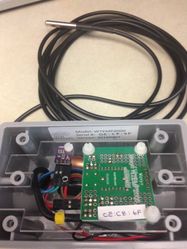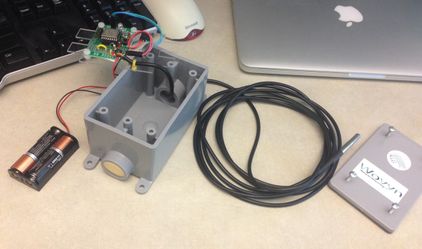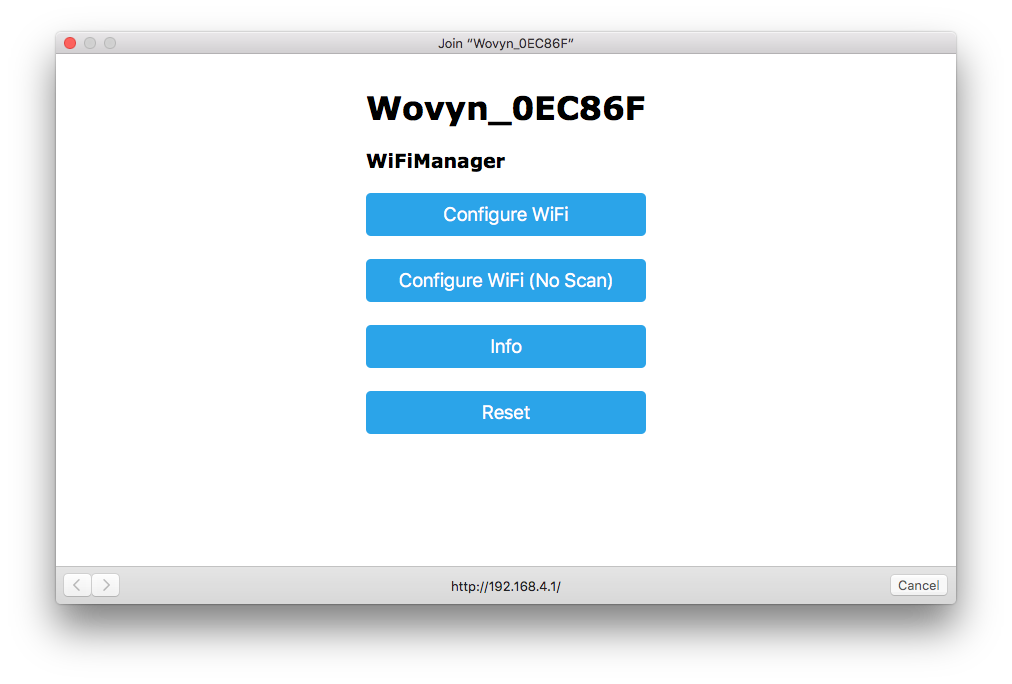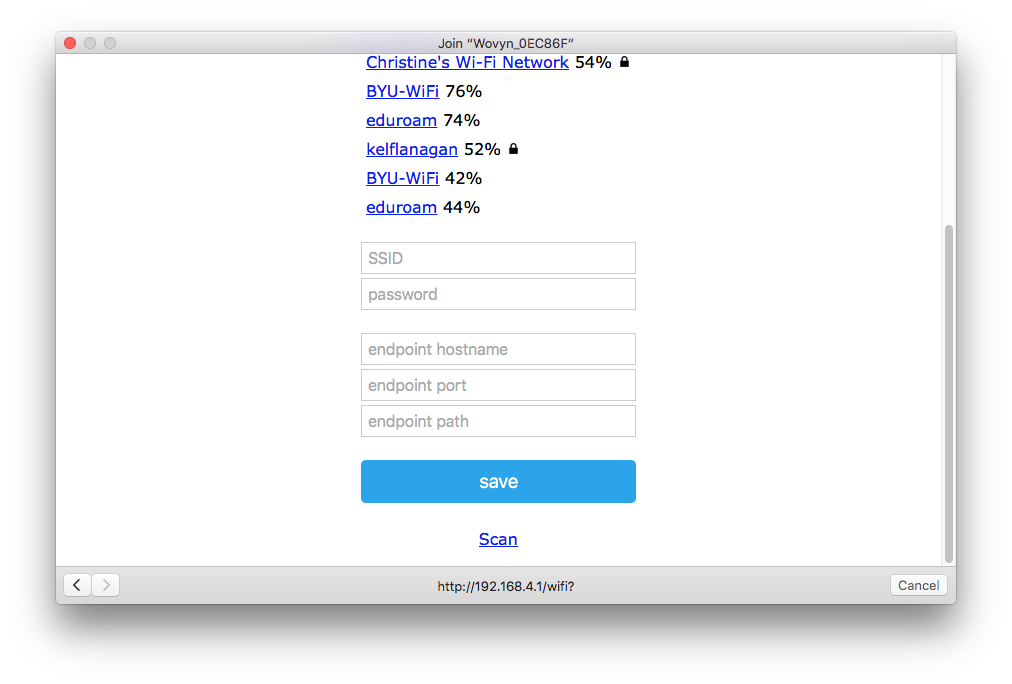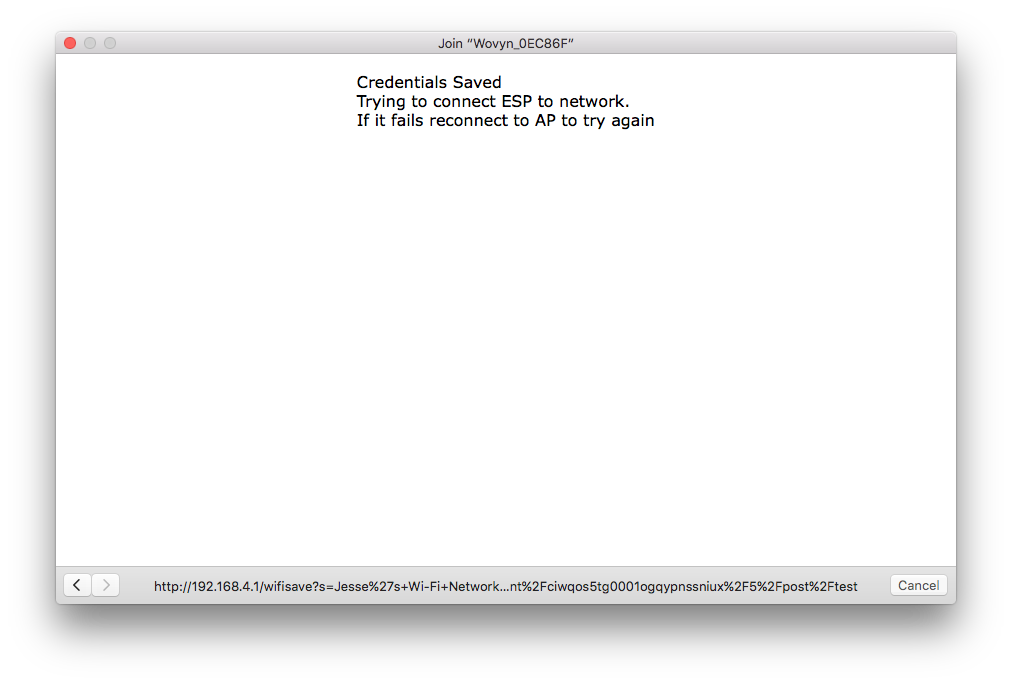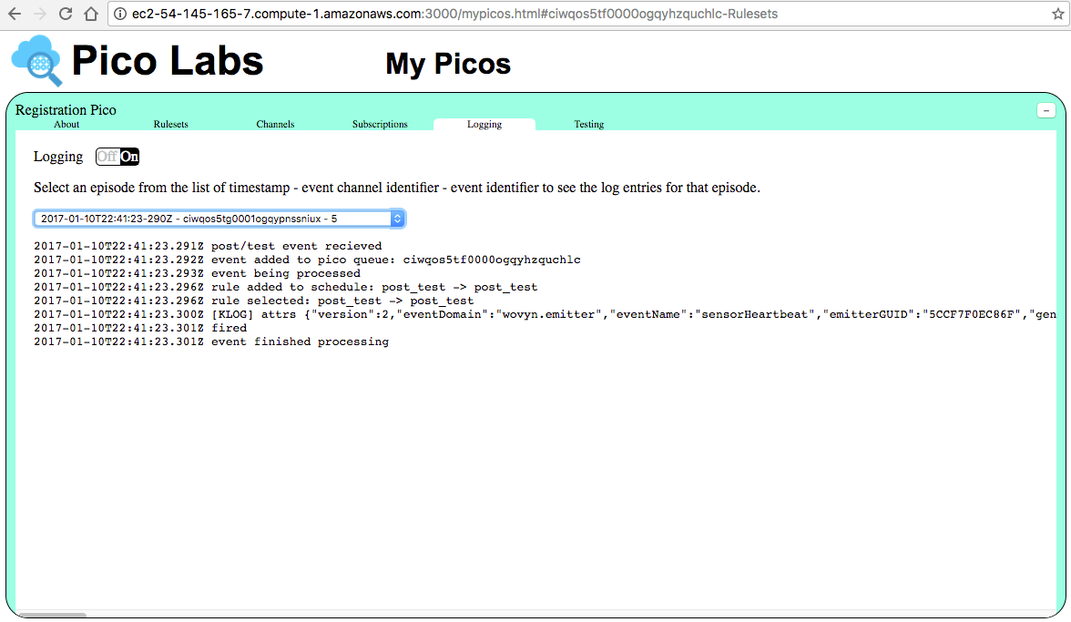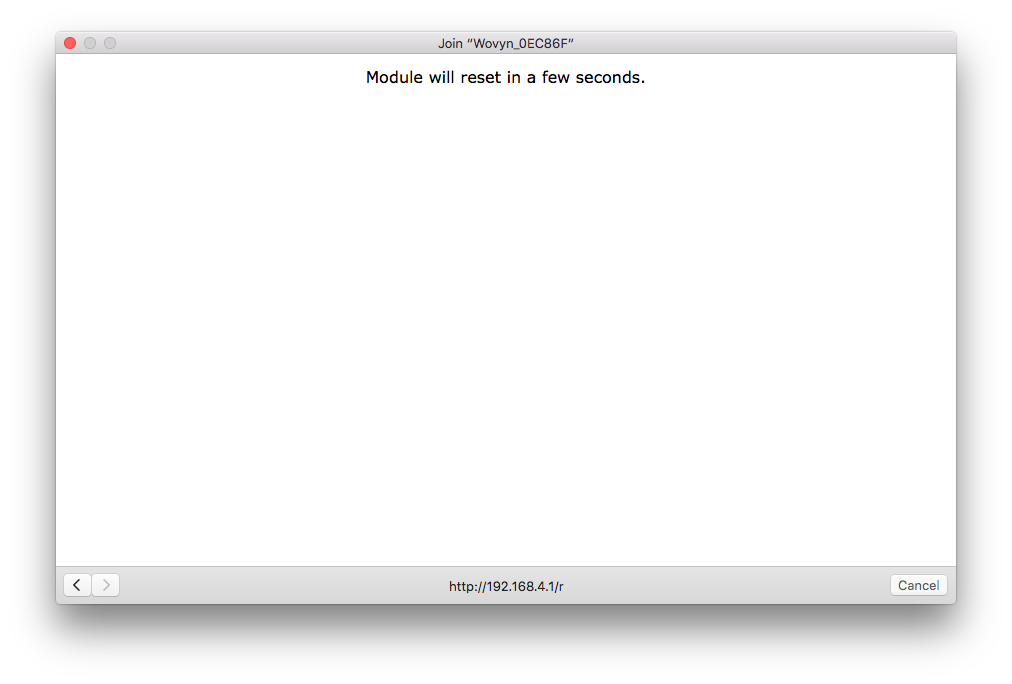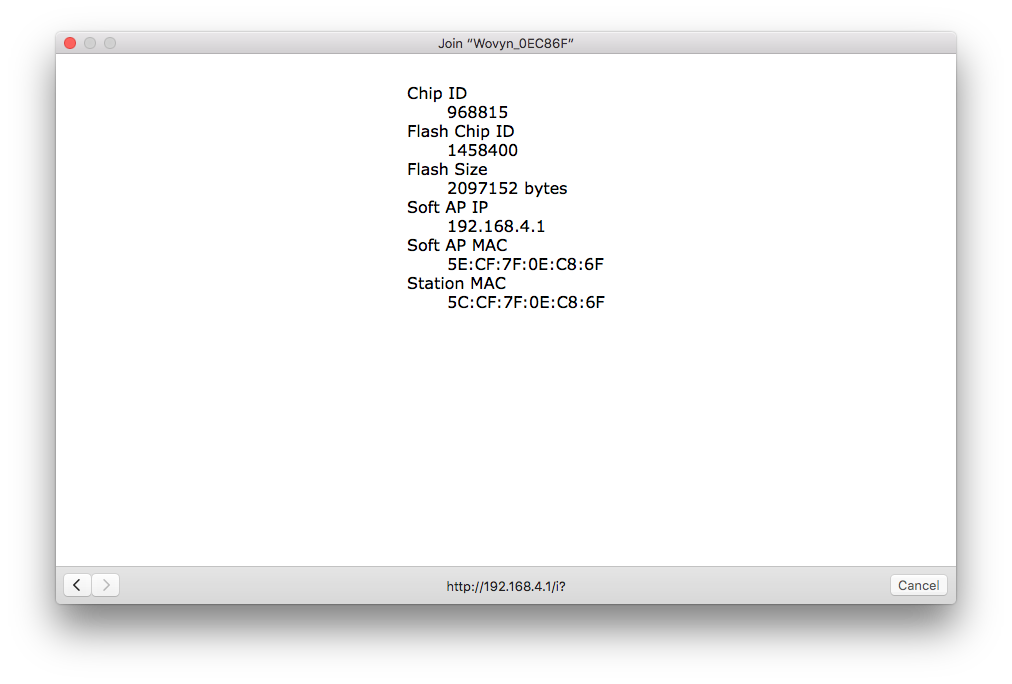Connecting a Wovyn sensor to the Internet of Things using a Pico and KRL.
Opening up the sensor, we can see model, serial, and version numbers. Besides its internal sensors, this device has an external temperature probe on a nine foot cable.
Turning over the plastic-shielded printed circuit board, and pulling out the battery pack gives us access to everything we need to proceed.
Step-by-step guide
Configuring the sensor to send its event:
- Get its attention by interrupting the power. We removed one of the batteries and replaced it. Immediately after restoring power, press the small black button beside the largest chip on the board. This will cause the device to become, for a short time, a WiFi hotspot.
- Select the WiFi hotspot using your personal computer. In our case, its advertised name is Wovyn_0EC86F. After a brief moment, the capture screen appears.
- Select the network which the device should use to communicate to the Internet. If you click on the button "Configure WiFi", the device will scan for WiFi hotspots and present a list, from which you can select one. If you know the SSID, you could instead choose the button "Configure WiFi (No Scan)", and enter the SSID manually. With nothing in the configuration boxes, you will see these prompts:
- Enter the password for that network, and the pieces of the URL which the device will use to send its event. In this case, we were wanting the device to send a `sky/event` to a pico engine running on an EC2 host named "ec2-54-145-165-7.compute-1.amazonaws.com" but found that the device only retained the first 39 characters, so we set up a sub-domain to reach the same server using a shorter name as the hostname. The engine was listening on port 3000. The complete path for our experimental "sky/event" was set up as "/sky/event/ECI/EID/post/test", with "ECI" replaced with an actual event channel identifier of a pico running on that engine, and we used the digit "5" as an event identifier. Note that the leading slash is necessary in the path. With all the information provided, click the "save" button.
- The device responds with this acknowledgement page.
Of course the pico identified by the ECI will need a ruleset to receive the event. This is the KRL code that we used initially.
ruleset post_test { meta { shares __testing } global { __testing = { "queries": [ { "name": "__testing" } ], "events": [ { "domain": "post", "type": "test", "attrs": [ "temp", "baro" ] } ] } } rule post_test { select when post test pre { never_used = event:attrs().klog("attrs") } } }The rule selected does nothing but log the event attributes. Notice that the ruleset shares a test harness which allows us to easily send a test event from the "Testing" tab of the "My Picos" page.
We used the "Logging" tab to see what happens when the device sends an event.
Notice that several attributes are sent by the device. The first of these are "version", "eventDomain", "eventName", and "emitterGUID". The horizontal scrollbar indicates that there is much more. Capturing and re-formatting all of it, we see that the remaining attributes are named "genericThing", "specificThing", and "property".{ "version": 2, "eventDomain": "wovyn.emitter", "eventName": "sensorHeartbeat", "emitterGUID": "5CCF7F0EC86F", "genericThing": { "typeId": "2.2.1", "typeName": "generic.compound.array", "healthPercent": 52.57, "heartbeatSeconds": 600, "data": { "temperature": [ { "name": "probe temperature", "transducerGUID": "5CCF7F0EC86F.1.1", "units": "degrees", "temperatureF": 72.72, "temperatureC": 22.62 }, { "name": "ambient temperature", "transducerGUID": "5CCF7F0EC86F.1.2", "units": "degrees", "temperatureF": 75.67, "temperatureC": 24.26 } ], "humidity": [ { "name": "ambient humidity", "transducerGUID": "5CCF7F0EC86F.1.3", "units": "percent", "humidity": 22.59 } ], "pressure": [ { "name": "ambient pressure", "transducerGUID": "5CCF7F0EC86F.1.4", "units": "mmHg", "pressure": 854.27 } ] } }, "specificThing": { "make": "Wovyn ESProto", "model": "WTemp2001", "typeId": "1.1.2.1.2001", "typeName": "enterprise.wovyn.esproto.wtemp.2001", "thingGUID": "5CCF7F0EC86F.1", "firmwareVersion": "Wovyn-WTEMP2001-1.7", "transducer": [ { "name": "Maxim DS18B20 Digital Thermometer", "transducerGUID": "5CCF7F0EC86F.1.1", "transducerType": "Maxim Integrated.DS18B20", "units": "degrees", "temperatureC": 22.62 }, { "name": "Bosch Sensortec BME280 Digital Humidity, Pressure, and Temperature Sensor", "transducerGUID": "5CCF7F0EC86F.1.2", "transducerType": "temperature.Bosche Sensortec.BME280", "units": "degrees", "temperatureC": 24.26 }, { "name": "Bosch Sensortec BME280 Digital Humidity, Pressure, and Temperature Sensor", "transducerGUID": "5CCF7F0EC86F.1.3", "transducerType": "humidity.Bosche Sensortec.BME280", "units": "percent", "humidity": 22.59 }, { "name": "Bosch Sensortec BME280 Digital Humidity, Pressure, and Temperature Sensor", "transducerGUID": "5CCF7F0EC86F.1.4", "transducerType": "pressure.Bosche Sensortec.BME280", "units": "mmHg", "pressure": 854.27 } ], "battery": { "maximumVoltage": 3.4, "minimumVoltage": 2.7, "currentVoltage": 3.07 } }, "property": { "name": "Wovyn WTEMP2001: 5CCF7F0EC86F", "description": "WTEMP2001", "location": { "description": "Timbuktu", "imageURL": "http://www.wovyn.com/assets/img/wovyn-logo-small.png", "latitude": 16.77078, "longitude": -3.00819 } } }We also tried out the "Reset" option, which apparently forgets only the WiFi hotspot the device uses to send its heartbeat events, but retains the endpoint information.
- Finally, the "Info" button presents some internal information.
Related articles
